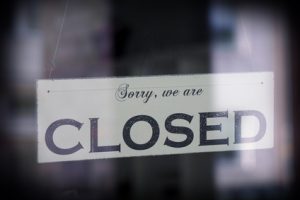Whichever way you look at it there is no doubt that the marketing slogan “Where there’s blame there’s a claim” cast the personal injury market into the spotlight.
At a time when the industry was relatively small in the UK, this opened the eyes of many to potential negligence claims. The industry has now mushroomed into a multibillion-pound sector which regularly advertises across all of the main media platforms. So, was the term “Where there’s blame there’s a claim” the best or the worst marketing strategy of all time?
Casting Focus On The Personal Injury Industry
As we touched on above, there is no doubt that the slogan caught the attention and imagination of many.
While very often we see business ideas transporting themselves across the Atlantic from the US to the UK the transferral of the personal injury claims industry was relatively slow at best or near non-existent at worst. So, from that point of view, it was an undeniably successful marketing strategy.
Quality Of Business
The quality of business which non-stop mass marketing and advertising attracted has been the subject of much speculation and discussion over the years.
We’ve all seen the newspaper headlines regarding spurious claims and suggestions that fraud gangs have made millions from staging accidents and other similar incidents. However, while these types of issues do not occur in isolation the vast majority of personal injury claims are perfectly valid and legal – let us not forget this.
Is There Always Somebody To Blame?
In some ways, and this is perhaps one of the downsides of the marketing slogan, the suggestion that there may be financial compensation for any incident where blame was attached (no matter how small) did attract perhaps unwanted attention.
It also became evident that relatively small claims, such as pothole damage on council-owned roads, would often cost more to dispute in the courts than the actual compensation paid out. As a consequence, many local authorities were forced to both increase their investment in road repairs and also pay out on claims (out of court) where there were no obvious signs of fraudulent activity.
Setting A Precedent
The ever-increasing number of compensation cases coming before the court, and indeed those settled out of court, often set precedents for similar cases in the future. In theory, this effectively insinuated a guilty decision before the details of a specific case had even been considered. The ability to refer back to similar cases in years gone by has proven to be a very strong argument for the legal fraternity and one they have certainly made use of.
The greater exposure these claims gained in the mass media the more potential victims stepped forward which swelled the number of clients for the legal profession. This increased income for the personal injury sector and increased competition amongst personal injury companies ensured significant payouts for the legal profession on a No Win No Fee basis. The fact that the No Win No Fee regulations have since been amended, with more changes expected in due course, should reduce the number of borderline claims which may not be successful in a court of law.
Increased Legitimate Claims
Over the years literally, millions of people have woken up to the fact that some of the personal injuries they have suffered, whether physical or mental, may have been the result of negligence.
Many of the claims that made it to the UK courts would not have done so but for the “Where there’s blame there’s a claim” marketing slogan. Let’s not forget the fact that where there is negligence it is not only the individual sufferers who should be considered but also potential sufferers in the future.
The actions of the business world show us that unless there is a financial penalty for companies who are deemed to be negligent there is little chance that they will actually change their operations to make them safer.
If you put yourself in the shoes of a successful company director who was forced to pay out tens if not hundreds of thousands of pounds in compensation, what would your next move be? Yes, a relatively small investment in the way your company operates could reduce or eliminate any personal injury claims going forward. In a world which is dominated by investment ideas and returns, what better return than the one you could expect from this type of investment?
To Conclude
There is no doubt that the slogan “Where there’s blame there’s a claim” cast the UK personal-injury sector into the limelight. This was an extremely active sector in the US and one which would eventually have crossed the Atlantic to the UK and beyond. In reality, this innovative marketing strategy and very catchy slogan did increase activity in the UK personal injury claims sector.
One factor which often gets overlooked is the knock-on effect of successful personal injury claims against companies and individuals. The vast majority of those involved tend to look at situations from a cold hard financial angle. So, the only way to avoid future claims and ever-growing payouts is to invest in the safety of their customers and their workforce. Surely this is a win-win for all parties?



